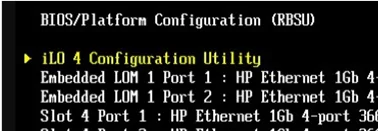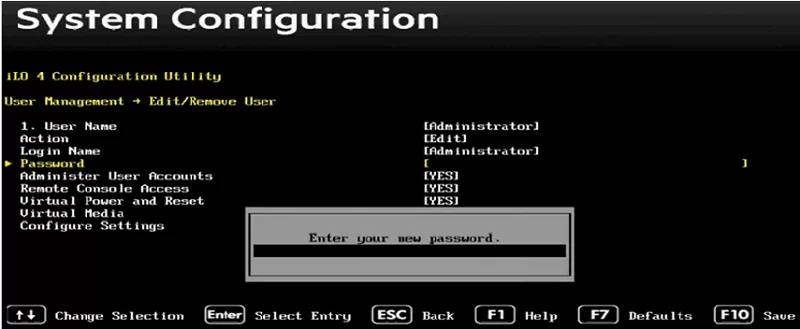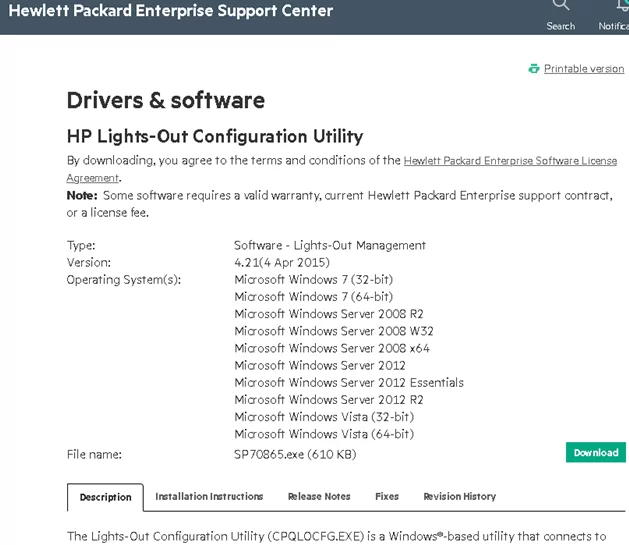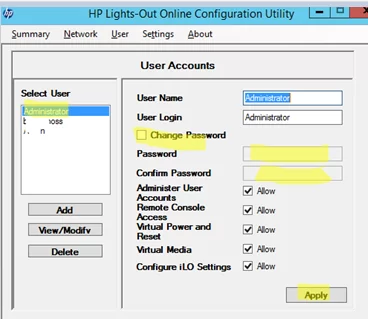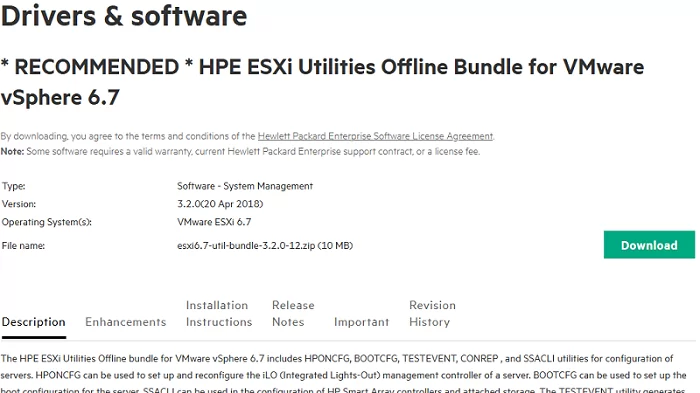In this article we will show how to reset the administrator password on the HPE server management board — Integrated Lights-Out (ILO). This guide is based on iLO v4, but it is also applicable to iLO3 and iLO2.
If you have physical access to your HPE server, you can restart your host and press F9 during the server boot to get to the RBSU (BIOS/Platform Configuration) setting menu.
Then select System Configuration -> iLO 4 Configuration Utility.
To manage iLO users, go to User Management.
Then select Edit/Remove User -> Edit.
Select Password and enter a new password.
Save the changes by pressing F10. The iLO administrator password has been changed. You can now boot your host OS.
The main disadvantages of this HP iLO password reset method are that you have to use the physical server console (go to the server room) and restart your operation system.
However, you can reset the iLO admin password directly from the running operation system. To do it, an official HPE tool is used — hponcfg or HP Online iLO Configuration for Windows (iLO Management Interface Driver must be installed in the operation system running on the HPE server).
We will show how to reset the HP iLO administrator password from Windows, Linux and VMWare ESXi using hponcfg.
Reset HP ILO Administrator Password from Windows
In order to reset the HP iLO administrator password from Windows, download and install the HP Lights-Out Configuration Utility SP70865.exe (if it is not installed yet) for your Windows version.
https://support.hpe.com/hpsc/swd/public/detail?swItemId=MTX_0e6dd836b4c54fa9b600b4491b
- Run the HP Lights-Out Online Configuration Utility (
C:\Program Files\HP\hponcfg\hponcfg_gui.exe) as an administrator; - Go to the User tab. You will see the list of iLO users here. Select Administrator and click View/Modify;
- In the next window, check the box Change Password, enter a new iLO administrator password and save the changes.
You can also use the command line tool hponcfg.exe.
You have to save the current iLO configuration to an XML file first:
hponcfg.exe /w current_config.xml
Then create a new XML file reset_ilo_admin_password.xml with the following text:
<ribcl VERSION="2.0"> <login USER_LOGIN="Administrator" PASSWORD="password"> <user_INFO MODE="write"> <mod_USER USER_LOGIN="Administrator"> <password value="NewILOPass"/> </mod_USER> </user_INFO> </login> </ribcl>
To apply the configuration with the new password to iLO, run this command:
hponcfg.exe /f reset_ilo_admin_password.xml /l hplog.txt
Set the HPE ILO Password from Linux Using HPONCFG
In Linux, you have to install the hponcfg as well. You cannot find it in the standard repositories, so you will have to install it manually. It is easier to add a repository with HP tool using the add_repo.sh (http://downloads.linux.hpe.com/SDR/add_repo.sh). The script will automatically detect your Linux version, bitness, etc., and connect the repository you need.
The yum (dnf) package manager is used to install hponcfg in CentOS/RHEL:
# yum install hponcfg -y
In Ubuntu/Debian:
# apt-get install hponcfg
# rpm -qf /sbin/hponcfg
Create an XML file with the new iLO administrator password:
# vi reset_ilo_password.xml
<ribcl version=”2.0″> <login user_login=”Administrator” password=”password”> <user_info mode=”write”> <mod_user user_login=”Administrator”> <password value=”NewHPiloPass1!”> </password> </mod_user> </user_info> </login>
Then apply the new password to the HPE iLO :
# hponcfg -f passwd_reset_ilo.xml -l log.txt
Firmware Revision = 2.20 Device type = iLO 4 Driver name = hpilo Script succeeded
How to Reset HP ILO Password from VMWare ESXi Shell?
To reset the iLO password from VMWare ESXi, you also need the hponcfg tool. If you are using a custom HPE ESXi image, the tool is already installed (/opt/hp/tools/hponcfg).
If you do not have it, download the HPE ESXi Utilities Offline Bundle for your ESXi version:
- vSphere 7.0 (https://vibsdepot.hpe.com/hpe/may2021/esxi-700-bundles/HPE-Utility-Component_10.5.0-63-signed_component-15745486.zip)
- vSphere 6.7 (https://support.hpe.com/hpsc/swd/public/detail?swItemId=MTX-702d3c7d8c4546a3b27d1458b5)
- vSphere 6.5 (https://support.hpe.com/hpsc/swd/public/detail?swItemId=MTX_6be6cedecfee4ffe9f6c808711)
Install the package:
#esxcli software vib install -d /tmp/HPE_bootbank_hponcfg_700.10.5.0.25-7.0.0.15525992.vib
Restart your host using this command:
# reload
Create a text file reset_ilo_password.xml (as described above) with the new iLO password and apply it:
# hponcfg -f reset_ilo_password.xml
In a minute, the iLO board will apply your new configuration and you will be able to logon with the new password.

